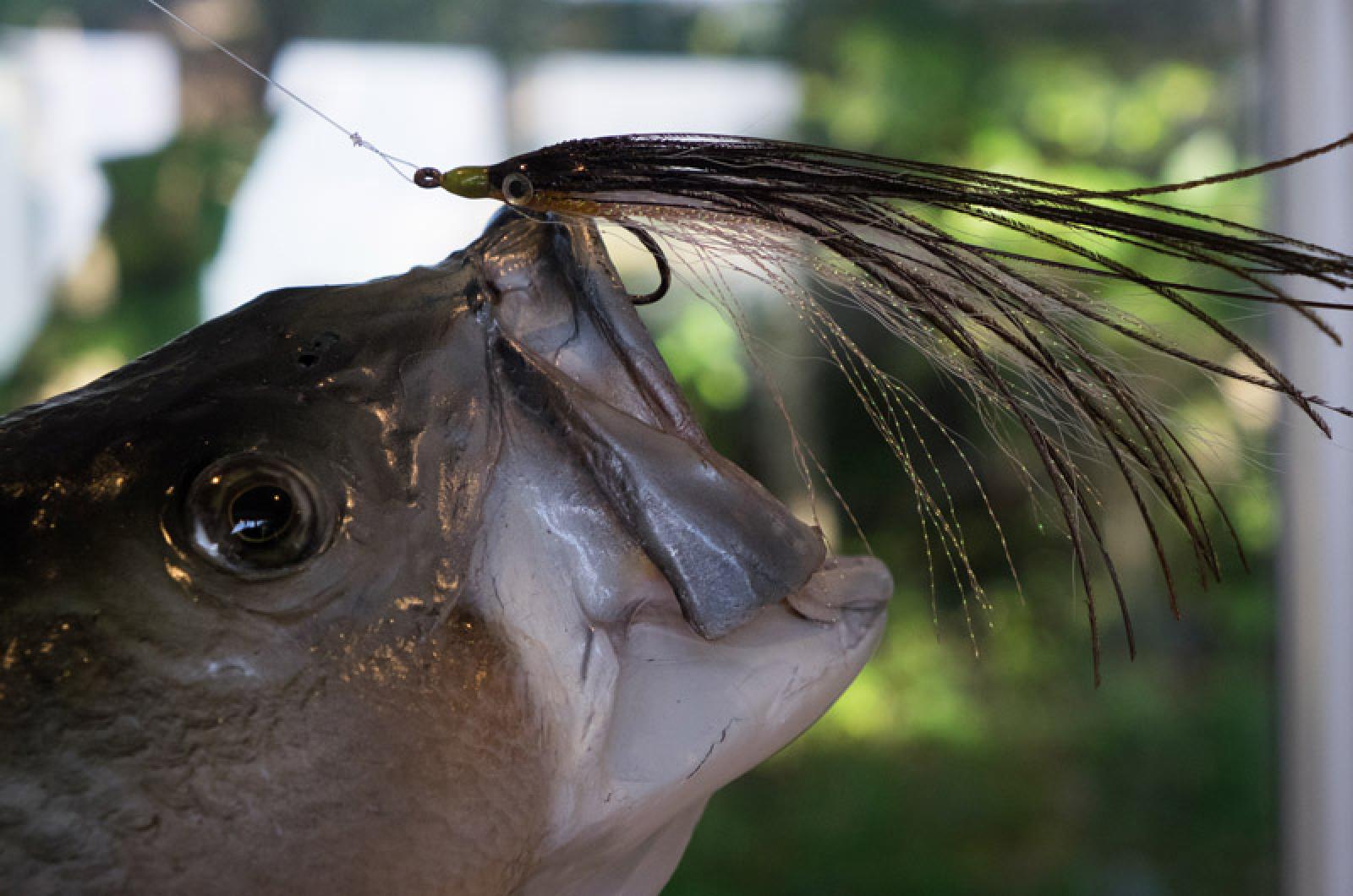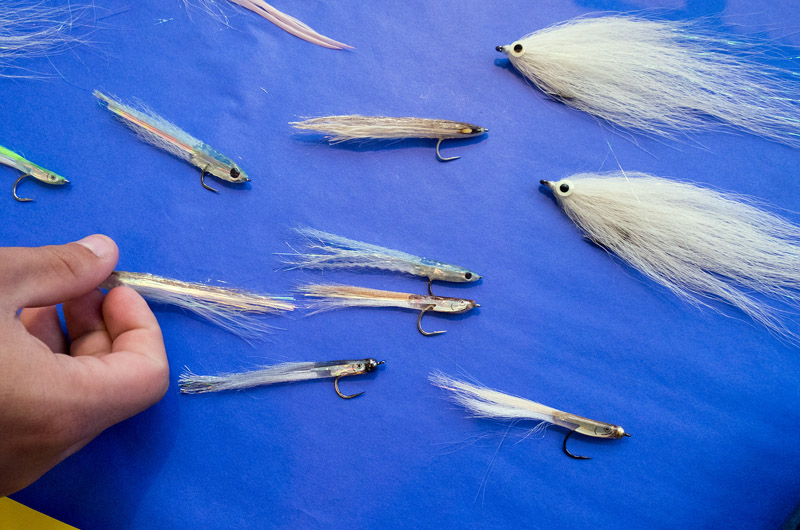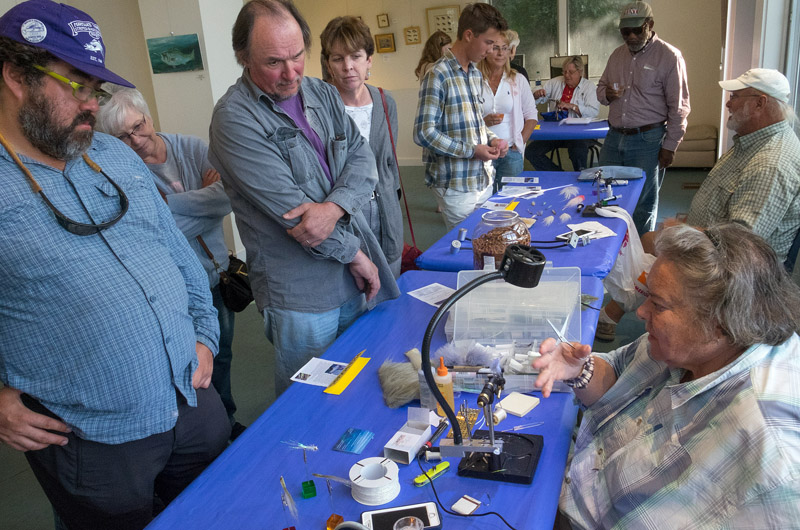Fly fishing lures can be made to look like almost anything — small fish, squid, butterflies. But they all need to have one key ingredient. They need to look delicious to other fish.
On Thursday and Friday evening at Feathersone Center for the Arts, renowned saltwater fly tyers, Page Rogers and Bob Popovics, along with local tyer Capt. Karen Kukolich, demonstrated their skills.
“It’s remarkable, they are all artists in their own rights,” said Ruth Meyer, former owner of Larry’s Tackle Shop and guest curator of The Art of Fly Tying. “Their art form has the ability to catch fish,” she added.
Wearing a Pop Fleyes cap with a 2015 Derby pin on it, Mr. Popovics demonstrated how to create his popular Surf Candy and Bucktail Deceiver flies. He used a quick drying acrylic and a blue light flashlight.
“A fly should be easy to make, should be durable, and should not foul when you cast,” he said. “That’s always been a creed I live by.”
With over 40 years of experience, Mr. Popovics helped shape modern saltwater fly fishing in the northeast. He is currently working on his second book about the subject, Fleye Design.
Mr. Popovics said a tyer has to react to the materials. “Every fly is different,” he said. “I never make one fly look like another, I can’t. You’ve got to play around, you’ve got to experiment.”
Mr. Popovics explained that the tapering of the fly creates life when retrieving the fly. He also stressed that the vantage point of a fish is the lower back angle of the fly, not above or directly to the side.
Flies are made with a variety of natural and synthetic materials. While Mr. Popovics worked with acrylic and bucktail, Ms. Rogers worked with epoxy and marabou.
“A lot of people look at marabou and think, oh boy, one bluefish and it’s gone, but it’s actually more durable than bucktail,” she said. “It goes through the teeth.”
Ms. Rogers was the first female tyer to be signed by Umqua, a renowned fly company. Her journey began in 1992, when she took a batch of 25 epoxy Sand Eels in to Larry’s Tackle Shop. Right away, half were bought.
Ms. Rogers demonstrated her craft by licking the purple marabou tail of a Sand Eel fly before establishing a body shape out of thin tubing and then smoothing on a bit of epoxy. “Keeps all those fibers out of the way,” she instructed.
The fly tyers offered tips to the audience, from hook sizes to when to visit a craft store instead of a fly shop, and which types of nail polish to stock up on for adding flash to a fly.
Ms. Kukolich ties mainly for herself. “It’s fun to do, every time I go somewhere, it’s different fish, different patterns,” she said. The flies she demonstrated were pink and white, because lately “albies have been eating pink everything,” she said.
Frames on the walls showed off delicate salmon flies made by John Popkin Traherne and William Blacker, so detailed that their wings almost fluttered. But no matter how beautiful to the human eye, the flys only real objective is to attract fish.
“These things got to catch fish,” said Mr. Popovics. “I’m making bullets for my gun. That’s what it is to me.”







Comments
Comment policy »